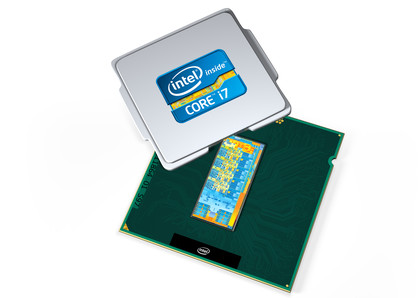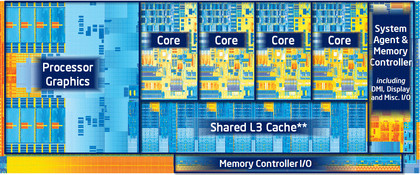Why Intel's new CPUs disappoint
So much for all the third generation, 22nm hype

The NDA has lifted and the lawyers are back in their cages. It's time to talk Ivy Bridge. I speak, of course, of Intel's latest PC processor family, hot from the fabs in all its 22nm glory.
You can read full reviews of the first Intel Intel Core i5 3570K and Intel Intel Core i7 3770K iterations of Ivy Bridge here on TechRadar. But what to make of the new processor family as a whole?
Prior to launch, my hopes weren't high. All the indications were that Intel wasn't adding cores or clockspeeds. It was also known that Ivy Bridge was a Tick rather than a Tock in Intel's Tick-Tock parlance - and that means a die shrink rather than an all-new architecture.
Generation game
Weirdly, however, Intel's also pitching Ivy Bridge as the Third Generation Core architecture. The previous two generations were the families known as Nehalem and Sandy Bridge, which were radically new designs that delivered huge performance boosts. Not exactly two terribly complimentary sets of expectations.
That said, I was hopeful regarding at least one aspect. Intel's new 22nm production process wasn't just any old die shrink.
Intel is also introducing its 3D Tri-gate transistors which promise to do everything from reducing power consumption to increasing clocks.

The graphics part of the Ivy Bridge package also looked promising thanks to more execuation units and an upgrade to DirectX 11 support.
Sign up for breaking news, reviews, opinion, top tech deals, and more.
As it turns out, Ivy Bridge is the most disappointing new chip from Intel in recent memory. Well, so long as you discount the Atom line of ultra mobile processors which operate in a very different market.
No more cores
As predicted, Ivy Bridge is a case on no more cores. Four is your lot. Given that a lot of software still doesn't scale that well across multiple CPU cores, that's not actually that big a deal. It's been clear for a while now that the future of PC processing probably doesn't involve an inexorable rise in the core count.
Instead, more per-core performance is also needed. Unfortunately, Ivy Bridge doesn't deliver. For the most part, clockspeeds compared to the outgoing Sandy Bridge generations of Core i5 and Core i7 processors have remained static. And with relatively few changes to the design of the cores – and no extra cache memory – instructions per clock are only very marginally up.
All that I pretty much expected. What I wasn't ready for was a similar status quo in terms of overclocking. You can argue that overclocking is an irrelevant niche activity. And you'd have a point. On the other hand, PC processors have long been powerful enough for the needs of the average punter.
So, if you're reading this and have interest in PC performance, overclocking should be on your radar. Unfortunately, however, Ivy Bridge won't provide much of a blip on your screen. In my testing, I actually beat it with the old Sandy Bridge sample I acquired a year ago to the tune of 5.1GHz beats 4.9GHz.
Matter of margins
Not a big margin and 4.9GHz is still a nice result. But it doesn't exactly back up Intel's hype for its new 22nm process. Likewise, a drop in peak power consumption from 120W to 115W isn't exactly exotic.
Oh and as for that new integrated graphics core, it's a goodly chunk faster than the old. But it's still pretty crap for games.

To be absolutely clear, Ivy Bridge is not a bad processor family. In fact, it's the best mainstream PC processor you can buy. But it's not nearly as good as it could have been. Instead, it's carefully positioned to be merely as good as it needs to be.
The reason Intel can get away with this, of course, is the failure of its only rival in this market, AMD, to even turn up to the fight for the last three or four years. But that's a story for another time.
Technology and cars. Increasingly the twain shall meet. Which is handy, because Jeremy (Twitter) is addicted to both. Long-time tech journalist, former editor of iCar magazine and incumbent car guru for T3 magazine, Jeremy reckons in-car technology is about to go thermonuclear. No, not exploding cars. That would be silly. And dangerous. But rather an explosive period of unprecedented innovation. Enjoy the ride.